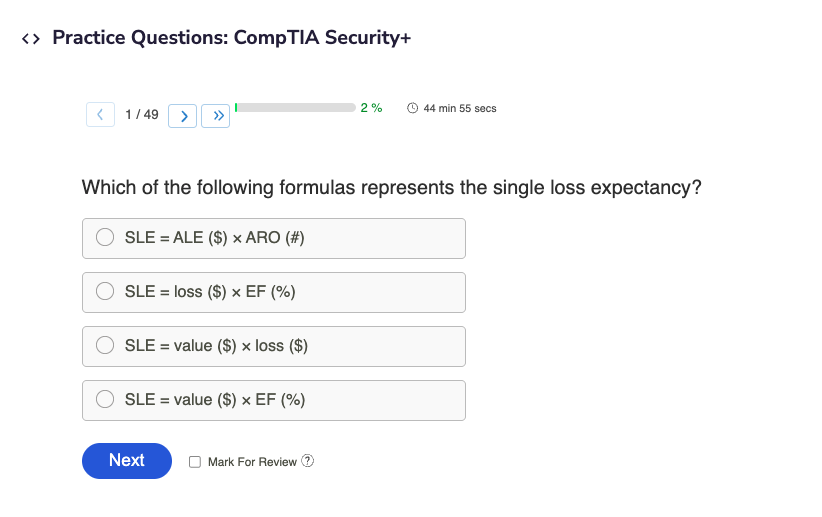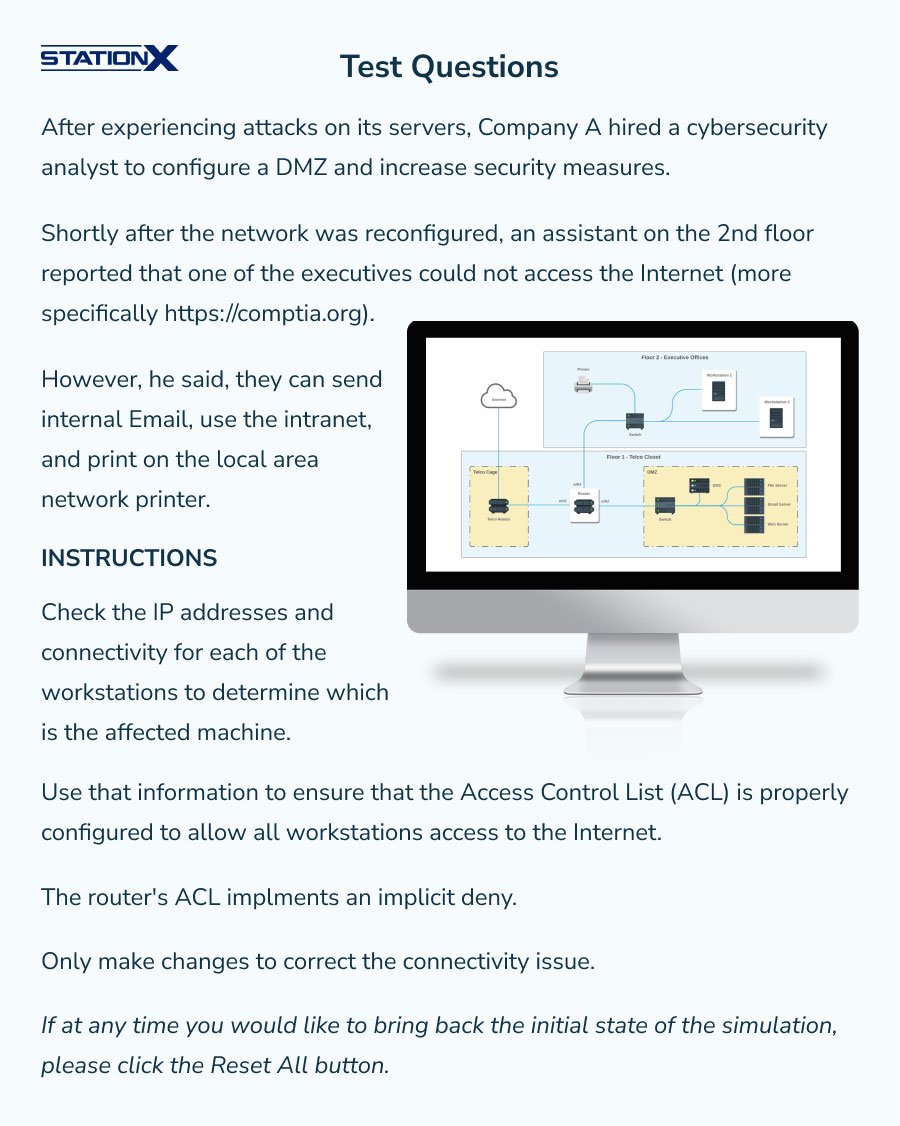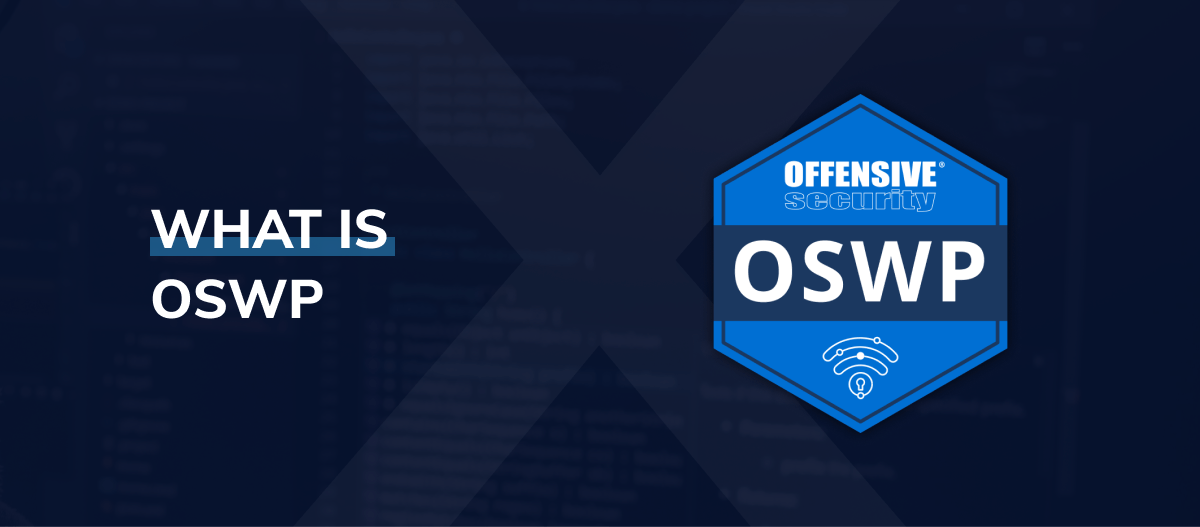CompTIA’s Security+ is a challenging exam, and at $425 USD, it isn’t a certification exam you want to take twice. That’s why we’re sharing our insights to help you build a solid plan of attack and learn how to pass CompTIA Security+ with confidence.
Keep in mind that this is a foundational certification. While there’s a wide range of topics to cover, none go into overwhelming depth. With the right study plan, the proper resources, and the right mindset, the exam becomes a very manageable challenge.
If you’re wondering how to study for CompTIA Security+, focus on mastering the exam objectives step by step, practicing with real-world examples, and testing yourself often. With a clear strategy and consistent preparation, you’ll be ready to succeed.
With that in mind, here are our 10 proven tips on how to pass the CompTIA Security+ exam. Let’s help you clear it confidently.
- What Can You Expect on the Security+ Exam?
- 1. Understand How You Learn Best
- 2. Don’t Lose Momentum
- 3. Schedule the Exam
- 4. Take Notes With a Purpose
- 5. Learn Your Acronyms
- 6. A Great Way to Learn Is by Teaching
- 7. Take Practice Exams
- 8. Decide How to Handle Performance-Based Questions
- 9. Fire Through What You Know, Flag What You Don’t
- 10. Consider Going to a Testing Center Instead of Writing Online
- Conclusion: How to Pass CompTIA Security+
- Frequently Asked Questions
What Can You Expect on the Security+ Exam?

CompTIA’s Security+ is a 90-minute certification exam consisting of a maximum of 90 questions, combining both multiple-choice and performance-based questions.
You will need a score of 750 (on a scale of 100-900) to pass. This is a closed-book exam.
As of this writing, Security+ is on version SY0-701, which has the following exam topics breakdown:
- General Security Concepts (12%)
- Threats, Vulnerabilities, and Mitigations (22%)
- Security Architecture (18%)
- Security Operations (28%)
- Security Program Management and Oversight (20%)

All the exam objectives are reasonably distributed, with a focus on Security Operations, Threats, Vulnerabilities, and Mitigations.
General Security Concepts (12%) - Introduces foundational security knowledge, including the CIA triad, risk management principles, governance, and the importance of security awareness in protecting assets.
Threats, Vulnerabilities, and Mitigations (22%) - Covers common cyber threats and attack types, vulnerability management, social engineering, malware, and strategies to mitigate risks through security controls and frameworks.
Security Architecture (18%) - Explores secure network and system design, cloud and hybrid environments, secure protocols, authentication, identity and access management (IAM), and defense-in-depth principles.
Security Operations (28%) - Focuses on day-to-day security functions such as monitoring, incident detection and response, digital forensics, disaster recovery, business continuity, and applying security tools and technologies.
Security Program Management and Oversight (20%) - Addresses governance, compliance, security policies, frameworks, risk management, audits, and the role of leadership in overseeing enterprise security programs.
To see how each knowledge domain is broken down, review the CompTIA Security+ Certification Exam Objectives document.
You will likely see between three and six PBQs on the Security+ exam (no more than 10). These questions require you to take action. Examples include:
- Configuring firewall rules, ACLs, or wireless security
- Reviewing SIEM or log files to identify an attack
- Troubleshooting user permissions or MFA issues
- Selecting proper encryption or hashing algorithms
- Following steps in an incident response scenario
CompTIA multiple-choice questions often use a “given this scenario” format, requiring you to choose the best action. For example:
You are a security administrator tasked with securing access to the company’s VPN. The solution must require something the user knows and something the user has. Which of the following best meets this requirement?
A. Strong password only
B. Biometric fingerprint scan
C. Smart card and PIN
D. Security awareness training
How to Take Your Security+ Exam
You can take this exam in person at a Pearson VUE testing center or at home using Pearson VUE’s online testing service.
If taken from home, a proctor monitors you through a webcam and microphone. In-person, you will be monitored through closed-circuit television with a proctor on site.
In-Person at a Pearson VUE Testing Center
Pros
- Professional, distraction-free environment
- Reliable testing equipment and internet connection
- On-site staff for technical or procedural assistance
Cons
- Requires travel to a test center
- Fixed scheduling may limit flexibility
Online with Pearson VUE’s OnVUE Service
Pros
- Take the exam from home for convenience
- Flexible scheduling with more available time slots
- No need to travel to a test center
Cons
- Strict system requirements and room setup
- Proctor monitors via webcam and microphone
- Risk of technical issues with your own internet or hardware
So, what steps can you take to maximize your chances of success?
1. Understand How You Learn Best
Before moving on to anything else, you first must evaluate how you like to learn. You may learn best when reading textbooks, or you might find watching lectures more your style. The best materials in the world won’t help if the information isn’t presented in the way best suited to how you learn. You need to stay focused and stay motivated.
If you absorb information best through a good study guide, we recommend looking at our article on the best study guides. If you prefer watching lectures, see our CompTIA Security+ Course & SY0-701 Practice Test Bundle.
Do
- Find the material that works best for your learning style.
Don’t
- Stick with something that isn’t working.
2. Don’t Lose Momentum
People often pursue Security+ after completing a network fundamentals certification, such as Cisco Certified Network Associate (CCNA) or CompTIA Network+. If you are following that same path, start preparing for Security+ immediately. There are two important reasons for this.
- Security+ will quiz you on some fundamentals, like ports and protocols. These will be fresh in your mind.
- Network+ has a security domain accounting for 14% of the exam content. This will all come up again in Security+.
When preparing for the exam, you will find about a third of the material is already familiar from your Network+ studies. As tempting as it is to take a breather before moving on to your next challenge, dive in immediately and save yourself having to relearn these sections.
Do
- Start prepping for Security+ immediately after your Network+ (or equivalent exam).
Don’t
- Wait and have to relearn any of the material that is likely to appear again.
3. Schedule the Exam
Choose a goal and set it in stone. Without seeing a finish line, procrastination becomes easy, and excuses become abundant. You figure, “taking a little more time couldn’t hurt” or “I’ll feel better after one more week of reviewing.” Before you know it, another month has passed.
If the deadline is fast approaching and you’re certain you’re not where you need to be, CompTIA allows you to reschedule within 24 hours of your exam. That said, setting a date on the calendar and putting up the money is a psychological driver that will push you forward.
Do
- Set a date and book the exam right away.
- Assume you need about half the prep time as you did for Network+. (If you took three months to prepare for Network+, book your Security+ in six weeks. If you took a month to write Network+, give yourself two to three weeks).
Don’t
- Wait until you feel confident enough to book the exam - you will never feel 100% ready.
- Be afraid to reschedule if you need more time. There’s no fee to reschedule, so feel free to do so if needed.
4. Take Notes With a Purpose
If you’re not taking notes properly, you might as well not take any. It’s easy to think you’re accomplishing something by taking down every word during a lecture or re-writing a textbook as you go, but you’re likely not absorbing it. It’s just not a good study process.
Instead, read or listen to the chapter straight through. Take a moment to ensure you understand it and rewatch/reread it if needed. Only after that, take down the notes in your own words. You’ll find your notes will be succinct and you will absorb the information more accurately.
Do
- Read or listen to the whole section once through, then a second time taking important notes.
Don’t
- Scramble to write down every word your instructor says or re-write the text verbatim; you won’t retain it that way.
5. Learn Your Acronyms
Every time you come across an acronym, write it down on its own separate list. It is not uncommon on CompTIA exams for a “which of the following…” type question to have a very obvious answer if you can remember the acronyms.

(Taken from the official CompTIA SY0-601 Exam Objectives pdf)
Do
- Keep an index of every acronym you encounter and its definition. Keep it separate from your other notes.
- Use the acronyms in your main notes so you only refer to your index as needed. It keeps your notes shorter and makes you used to seeing and remembering the acronyms in context.
- Take a look at our CompTIA Security+ Cheat Sheet.
6. A Great Way to Learn Is by Teaching
If you have a study partner, it’s time to start quizzing each other. If not, find a friend or spouse who is willing to donate some time to quiz you. Have them go through your notes and ask broader concept questions.
An online quiz can ask you “what are the three parts of the CIA Triad,” but a person can ask you to explain what “integrity” means in the context of the CIA Triad. This is your opportunity to become the teacher and explain it. You’ll discover very quickly what topics you have a strong grasp of and which you need to review.
Do
- Find someone who will quiz you based on your notes.
- Have them use open-ended questions such as “explain the difference between authentication and authorization,” and not “what does AAA stand for.”
Don’t
- Forget to thank them.
7. Take Practice Exams
Practice exams are key to determining how prepared you are. There are lots of sample tests online, such as the practice exams in our members section updated to the latest exam version. Treat these exams like the real thing. Set a timer if one is not included. Keep your notes out of reach. Don’t take breaks or allow for distractions.
After your practice exam, review your answers and make notes on the practice questions you got wrong. Take a break. Then review the information again and do a different test. Don’t stress out about getting practice questions wrong. Take note, review, and go back to it later. When you retest, you’re likely to have the correct answer.

Do
- Take lots of practice exams from different sources.
- Treat them like the actual exam. No distractions, no notes, and use a timer.
- Add every wrong answer to your notes as something to review.
Don’t
- Retake the practice exam immediately after reviewing the material. Come back to it another day.
- Stress about doing poorly on the practice tests. Questions can be phrased in odd ways, small details can make all the difference. Getting things wrong is part of the learning process.
8. Decide How to Handle Performance-Based Questions
On the Security+ exam, you’ll see anywhere from one to ten performance-based questions (PBQs). These may ask you to configure firewall rules, analyze logs, or drag-and-drop security devices into the correct place on a network diagram. PBQs usually take longer to complete than multiple-choice questions, so your strategy matters.
Rather than always doing them first, decide how you want to handle PBQs based on your style:
- Do them first if you’re confident in hands-on tasks and want to get them done while your focus is sharp.
- Save them for later if you’d rather quickly clear multiple-choice questions, build momentum, and then dedicate uninterrupted time to PBQs at the end.
The best choice depends on how you work under time pressure. The important thing is to know your strengths and manage your time wisely.

Tackle these immediately and use your remaining time to carefully answer the multiple-choice questions. If you leave the PBQs until the end, you may find you do not have time to complete them (even if you know the answer) and could lose out on big points as a result.
Do
- Pick a PBQ strategy that matches your style and stick to it.
- Manage your time carefully so you don’t run out of minutes at the end.
- If you save PBQs for later, leave enough time to complete them properly.
Don’t
- Panic if PBQs take longer than expected; move on and come back if needed.
- Change your strategy mid-exam unless absolutely necessary.
- Ignore PBQs; they carry significant points and can boost your score.
9. Fire Through What You Know, Flag What You Don’t
After tackling the performance-based questions, do a sprint through the multiple-choice ones. If you read something you’re not certain of right away, move on. The goal here is to get all the ones you’re unequivocal about out of the way. There are two benefits to this.
- You can now see exactly how much time you have to dedicate to the questions you need to think about.
- You will often find unintended hints in the phrasing of other questions.
Imagine seeing a question with RAID as a possible answer, and you can’t for the life of you remember what that is. You could stare at it for a few minutes trying to remember, but instead, you move on and see a different question asking which type of RAID is used for both redundancy and performance. By reading ahead, you found the answer to your question.
Do
- Skip any questions you can’t answer immediately and return to it later.
- Go through the whole exam before returning to any unanswered questions.
Don’t
- Spend time focused on a single question while there are others you haven’t reviewed yet.
10. Consider Going to a Testing Center Instead of Writing Online
It is certainly tempting to write the exam online. You don’t have to leave the house or worry about any belongings you can’t bring into the testing room with you (such as your phone, purse, or watch). Despite this, writing in person helps avoid many possible frustrations.
- Technical Difficulties: Getting technical support, particularly on a weekend, can be difficult and may run into your exam time before things are resolved. If you have issues during the pre-exam setup, difficulty with the proctoring software, or a bad connection, you may have to reschedule your exam.
- Distractions: If you live with anyone, you must ensure they understand you’re writing an exam. If someone opens the door to your office and says something to you, it can (and likely will) result in Pearson VUE ending your exam.
- Exam Integrity: Pearson VUE fully controls its testing centers, but they can’t control your home. To prevent cheating, a proctor will be more critical of anything they deem suspicious. Ambient noises, moving your lips when reading, or shifting your sitting position may prompt a proctor to open a chat window and warn you.

Do
- Consider writing at a testing center.
- If writing at home, make sure to test the connection and proctoring software in advance, make sure you won’t be disturbed under any circumstance, and get comfortable.
Conclusion: How to Pass CompTIA Security+
While this exam is by no means easy, it is absolutely within the reach of anyone willing to put in the time and effort. We hope these tips give you an extra edge on your first attempt at this exam, and you can proudly display Security+ Certified CE on your wall soon.
Remember that you can secure lifetime access to our CompTIA Security+ Course & SY0-701 Practice Test Bundle, an affordable way to strengthen your skills and prepare for certification with confidence.
If you’re starting out in IT support or cyber security, Security+ is the ideal first step. When it’s time to sit your exam, remember that you can purchase a discounted Security+ exam voucher through us and save up to 30% off the standard price.
And if you’re looking for a broader learning path, the StationX Master’s Program gives you access to 30,000+ expert-led courses and hands-on labs, covering everything from Security+ to advanced cyber security domains.
Here’s to a smooth and successful exam experience!



























